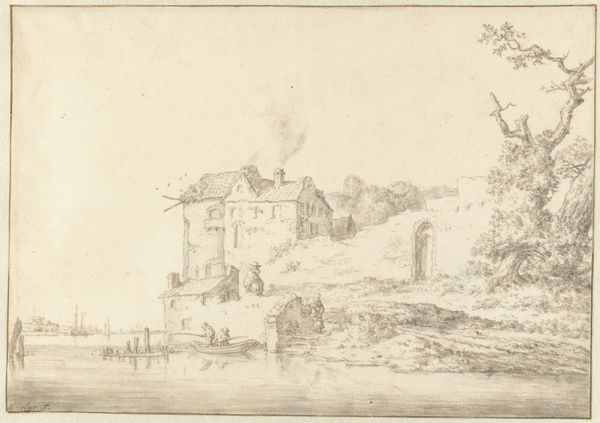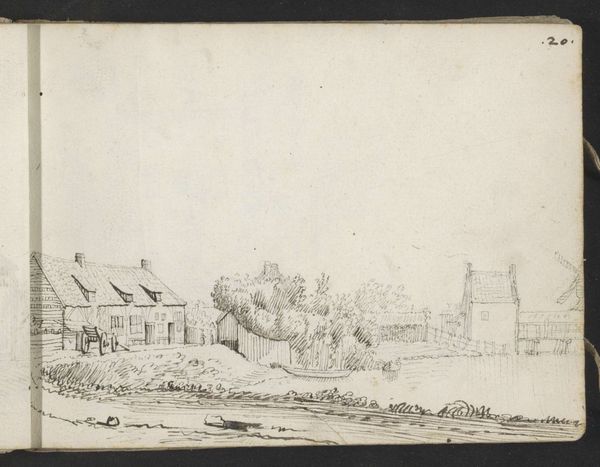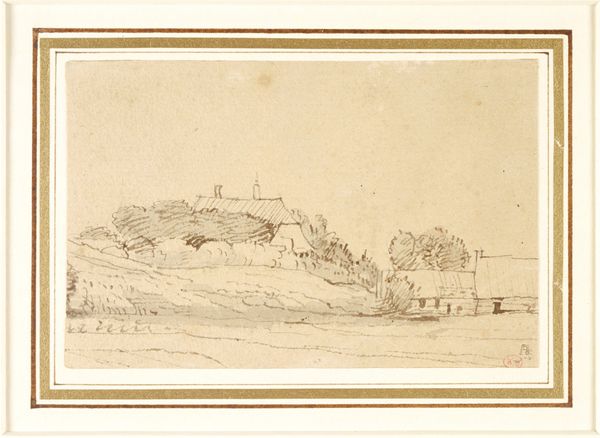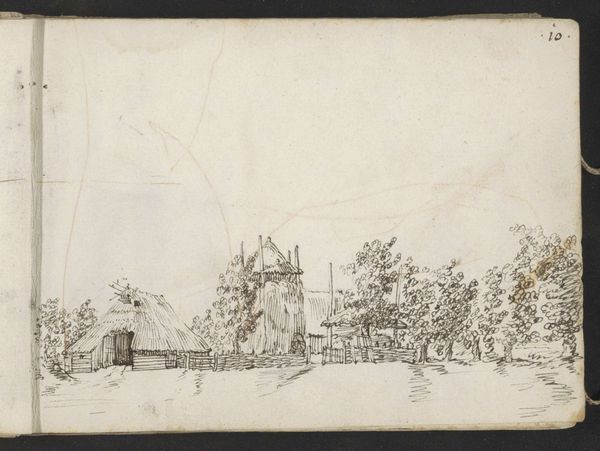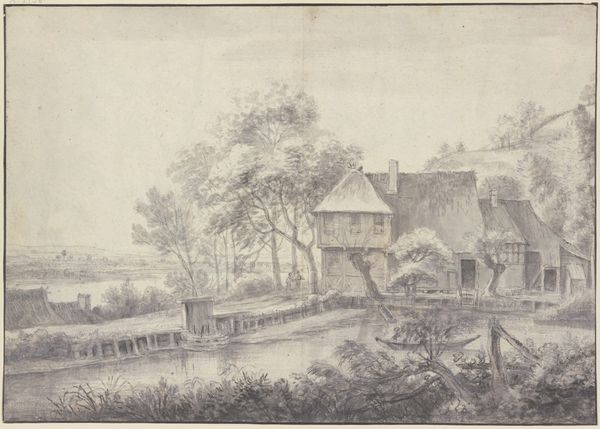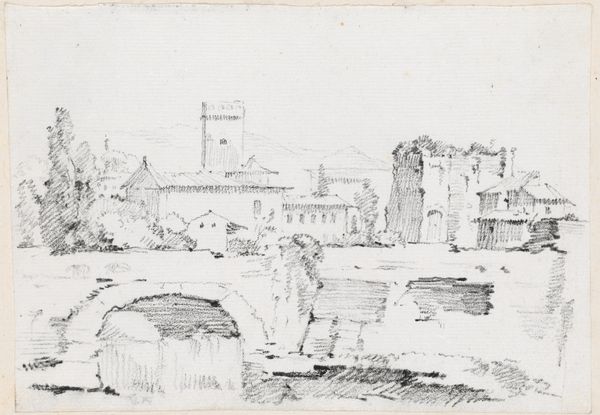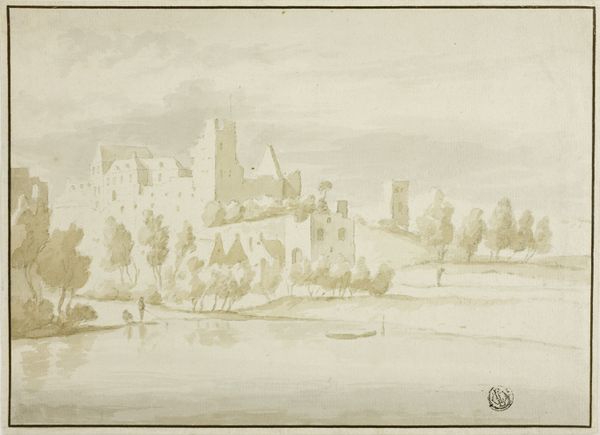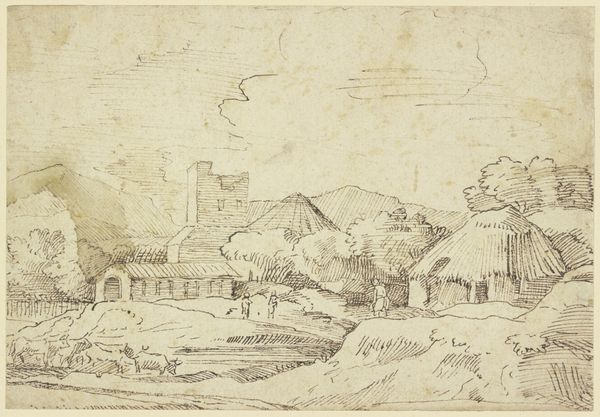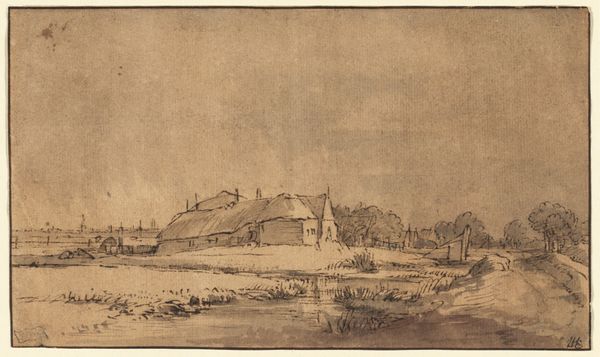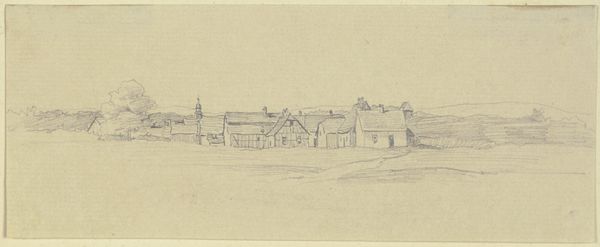
drawing, paper, pencil
#
drawing
#
dutch-golden-age
#
pencil sketch
#
landscape
#
paper
#
pencil
#
realism
Copyright: Rijks Museum: Open Domain
Editor: This is "Farmhouse Near a Group of Trees" by Pieter Moninckx, dating from around 1645 to 1646. It's a pencil drawing on paper. There’s a lovely serenity to it; the house seems so embedded in its surroundings. How do you interpret this work, considering the time it was made? Curator: What strikes me is its ordinariness, even banality. It’s a commonplace scene meticulously recorded. During the Dutch Golden Age, there was a huge burgeoning of interest in depictions of daily life, including rural scenes like this. The Dutch Republic, after throwing off Spanish rule, was deeply invested in crafting a national identity, and these kinds of images played a vital role. Editor: So, this seemingly simple drawing actually participates in a larger political project? Curator: Precisely! While portraiture celebrated individual success and wealth, landscapes and scenes of everyday life served to unify the nation around shared experiences. Imagine the audiences, newly independent, seeing their own world reflected back at them in galleries and private collections. Do you notice how detailed the execution is, for a drawing? Editor: Yes, it is very meticulous, especially the roof and the fence. Curator: This level of detail signals a conscious effort to portray reality as it was perceived, but perhaps with a slight idealization. This wasn’t just documentation; it was nation-building. Editor: I never would have guessed there was so much history packed into such a quiet scene! It definitely changes how I view the drawing. Curator: Art is never created in a vacuum; even seemingly simple landscapes have deeper ties to society and cultural context. I’m glad you see it differently now.
Comments
No comments
Be the first to comment and join the conversation on the ultimate creative platform.


